|
Wow, how time flies. 16 month ago I joint the founders of Mint Wireless. And what an exciting ride it has been since then. In fact, it kept me so busy that I have not written in my blog in a year. A real shame, since so many disrupting things are going on in the payments industry that really excite me… Let’s take one step back and look into why I was so fascinated by the mPOS payment space in the first place when I was looking for my next entrepreneurial challenge in early 2013… As a matter of fact, I analysed various opportunities back then with a good mate of mine… online supermarkets, online car tyres, online inheritance, airbnb for boats and the list went on and on with endless opportunities. I love to disrupt and I am grateful to be able to experience all these technological revolutions first hand. When I looked at the payment revolution that was taking place in the US and Europe through Square, iZettle, Payleven and other companies, I sent off emails to the CEOs and asked them bluntly whether we could launch their businesses in Australia for them since I could not find one appealing solution in the marketplace that would service Australian small business owners well… Luckily my good mate met one of the founders of Mint during that time and the rest is history… but let’s look at the main reasons why the Australian mPOS payment space was and still is ripe for some disruption:
1. Acceptance Side a) Lack of software innovation: Among the big four banks only CBA really showed a continuous stream of innovative product launches (Leo/Pi, Emmy) and investments into the technology and mPOS space over the last few years: “Commonwealth Bank is on track to spend more than $1 billion on technology this year having spent $589 million in the first half.” Westpac has only recently introduced “The Hive” as its early-stage innovation center. In general large corporations often and especially banks face the dilemma of legacy systems and complex internal processes that hinder innovative and creative task forces. While some multinational companies or banks set out nimble speed-boats (spin-offs) that are independent in their decision-making e.g. the Otto Group, others mostly struggle to keep up with market developments and technology trends, especially if they keep the think-tanks and innovation departments in-house within their complex hierarchies. "The banks who don't embrace the fintech revolution, will be left behind," says Sam Hodges, co-founder of Funding Circle in the US. “Jeff Schumacher, CEO of BCG Digital Ventures, says of the companies receiving series A or B financing in Silicon Valley, around half of all investments were into consumer facing companies, and almost two-thirds of those investments were into fintech.” And then there are start-ups and young local players similar to Mint that are powering forward in terms of innovation, such as Tyro, Quest, MyTappr or dozens of Aussie start-ups in the Customer-Not-Present (CNP) space… It is good to see such payment innovation made in Australia, which I am sure Malcolm Turnbull would also agree to, who met up with Jack Dorsey in January 2014… What would happen, if Square came to Australia? I reckon it would even increase the level of innovation coming out of Australia through the increased competition, but ultimately all banks will offer an mPOS solution on their own anyways. Small business owners will benefit from it, since they will see mPOS products improving greatly. I am also not rating Square that highly when it comes to their NFC/EMV competency and knowledge about the AU regulatory requirements at this stage and Jack and his team are currently probably very busy, I reckon, figuring out how to launch their Chip&Pin solution in the US… Can’t wait until they reveal their Chip&Pin hardware… PayPal Here on the other hand is a serious competitor both on the hardware and software side – all that PayPal Here is currently missing is EFTPOS support for Australia. b) Lack of convenient onboarding and merchant support: Especially the micro to small business sector - with roughly 1.9 million business in Australia falling into this category - were long underserved by banks due to their risk profiles e.g. freelancers, sole traders, tradies, plumbers, contractors etc. In addition it was a tedious and very time consuming paper-based process that not only required 100 points of ID, but company details, statements etc. plus various signatures on lengthy documents, which often still involved going to a branch. Luckily this is now a thing of the past and most onboarding flows are online with the option to upload signed documents as a scan and will soon be fully mobile. My comparison of different onboarding flows still shows major differences though with loads of room for improvements especially when it comes to duplicate data entries required for different systems e.g. the signup for CBA’s Emmy mPOS product requires personal data to be entered various times into an online form, phone validation both by CBA and KeyCorp plus an additional in-app entry without the systems synchronising. In the last 16 month at Mint Wireless, the team has been working hard on the onboarding flow which Mint uses for its customers that is now fully digital with a quick turn-around time. c) Lack of mobile Eftpos and contactless devices: How many of the old, clunky and non-integrated bricks do you run across every day buying your coffees? Still plenty and yes, they work. No doubt. However the next generation of credit card terminals offer a much more convenient use with direct interfaces to POS software, email or SMS receipts, etc. and without any cables! Waiters will be able to carry them in their pockets and serve you seamlessly at your table or standing in the queue (Queue Busting). Signatures are already a thing of the past since 1st of August 2014 and are gradually being phased out thanks to the PINWISE campaign. This means that the fraud risks of leaving your credit card with a waiter gets reduced as well. There still are over 826,000 Eftpos terminals in Australia and 250,000 contactless terminals with an estimated 300,000 Eftpos or Hicaps needing a replacement in the next few years. Australia has one of the highest contactless adoptions in the world and consumers are demanding innovation around the hardware: “The proportion of Australian adults who owned a contactless card increased from 26% in September 2011 to 66% in March 2014, while the proportion that have used a contactless card increased from 12% to 47% over the same period. It was about time that the heavy bricks or click-clack machines disappeared from taxis etc. and they were never really convenient for plumbers or tradies out on the road. I love what Uber, Cabcharge and Ingogo have done for taxi drivers and Mint will play in this exciting space as well. Ultimately EMV hardware will get commoditised in the next couple of years and the smarts around it will largely determine how businesses can make use of it. We are currently looking closely at Loyalty Programs, Proximity Features and Analytics plus various innovative mobile CNP features to enrich the value of mPOS payments even further for small business owners helping not only to improve their cashflow, reducing time spent on invoicing and administrative work, but also to generate more valuable insights plus to make their business more sticky with loyal and returning customers. 2. Issuing Side a) Apple Pay: Well, well, well… the issuing side has recently gained tremendous momentum with the announcement of Apple Pay. Whilst other digital wallets such as google wallet are considered a failure, it seems that the message has finally gotten through to the banks, schemes and consumers around the globe: “There are more convenient ways to pay!” EMVCo had published its new payment tokenisation standard in March this year and even the US Fed has already a tokenization working group on the way. Apple will essentially become a Tokenisation Service Provider, which is very exciting also for Mint (ASX: MNW) with the M10 NFC enabled contactless terminals. The new hype will soon be reaching all iPhone6-countries around the world. It is only a matter of a few years until banks will stop sending out plastic credit cards…. b) The end of plastic credit cards: I strongly believe that the days of plastic credit cards are counted. I even have a bet with my good mate that schemes will stop shipping plastic cards as soon as 2019. Moore's law hit credit cards without a doubt: "Our brains are not well equipped to understand sustained exponential growth. In particular, we severely underestimate how big the numbers can get." Whilst the credit card mechanisms and the power of the schemes such as Mastercard, Visa or Amex will remain and even grow by 2019, the plastic will disappear… We will simply load new tokens (“temporary credit card numbers”) through APIs straight from the schemes into our digital wallets or apps whenever we need to refresh the stored and hashed payment data on our devices or in our payment software. Host Card Emulation (HCE) will drive more and more value to the NFC ecosystem moving forward and turn all sorts of mobile devices into payment methods on the issuing side. Interestingly enough though contactless payments with a mobile phone are a normal part of everyday life for people in Japan since the 1990s, but the Galapagos effect has shielded Japan off from other parts of the world making it now a glass bowl for everyone to look into the future especially of the US, that is still an old-school mag-swipe country… I would go as far as comparing the commencing death of plastic credit cards (killed by tokens) with the progressing death of paper-based flight tickets (killed by QR codes), the death of the telephone booth (killed by mobile phones), the death of music CDs and film DVDs (killed by online streaming and iTunes), the death of large hard drives (killed by the cloud) or the death of paper-based newspapers (killed by online publishing)… I also get really excited by all-in-one credit cards and one of the hottest new start-ups I have read about is Final, that plans to provide a unique, merchant-specific credit card number produced by Final that can be used just once or they can be used consistently to allow ongoing charges. Listen up fraudsters. Your life will get much harder! You bet, I have signed up to be part of the launch of final…. c) The end of signatures and PINs: As mentioned already in the above, contactless transactions are on the rise and I reckon the current transaction limit in Australia of $100 AUD will soon be raised as well. The end of signatures as a security mechanism for credit card transaction is now very close and despite many countries finally moving to Chip&Pin, there are already new, more secure and convenient authentication mechanism on the horizon. Mastercard is already running voice and face recognition and Biometrics have surely entered the mainstream… Apple’s biometrics combined with their NFC and tokenization have allowed them to charge “Customer-Present” rates and finger scanner mechanisms (e.g. TouchID) are built into most new smartphones already. d) The end of cash: Many parts of the world, such as Sweden are even moving to a cashless economy, so cash will ultimately be killed by other payment methods such as tokens, Paypal or new start-ups such as Dwolla.com or maybe even a digital currency like Bitcoin as well. Just apply Moore’s law to the sheer processing power and ever faster growing market penetration of smart devices and it will accelerate innovations in the payment space to dramatic levels in the upcoming years. Apple, Google, Amazon, Facebook and Paypal are all prepared to attack payments globally and will surely drive the transition of the masses, but there is a healthy mpos eco-system and hundreds of start-up especially in the US driving new kind of payment innovations – one of them still Square itself pivoting and trialling new payment ideas into all sorts of directions e.g. now trying to send payments via bluetooth… So here I am, working frenetically with all the other minties on the payment platform of Mint, feeling proud that I am part of this payment revolution in Australia introducing new technologies to the market such as a fully white-label enabled mPOS payment platform that banks can license to jump onto this wave quickly while benefiting from ongoing innovations that Mint will provide as an outsourcing partner. The Mint roadmap is packed in line with the above technology disruptions e.g. new app features, tokenisation, wallets, customer-not-present features and of course certifying the latest mobile terminals being an acquirer- and hardware-agnostic solution provider. Soon every bank in Australia will offer some sort of an mobile payments product both on the acceptance and issuing side which opens up new opportunities also for Mint and its partners especially when it comes to developer programs, open APIs and webservices.
0 Comments
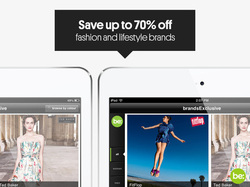 1. What are the elements of the mobile strategy of brandsExclusive? The first stage is to provide the best mobile interface to our service on the devices they use today. The focus has been on iOS apps first as our audience is heavily skewed to iOS devices over other. We have also provided a html5 mobile website for other devices. This includes providing feature parity on our apps with our website so that customers need to never visit our website if they desire. The second stage of our strategy is to go above and beyond to provide interfaces and features that are not possible in a desktop browser environment, taking advantage of the unique benefits mobile devices provide. It's our belief that mobile devices are the future for e-commerce, we estimated last year that by the end of 2013 most of our visits would be on mobile devices. 2. Please share a few metrics about your mobile offerings with us e.g. how many mobile users do you have? How many app downloads? In the last 30 days, 47% of visits have been using mobile devices, approximately 30% being on our dedicated iOS apps for iPhone and iPad. In terms of downloads we are in the top 10 in the lifestyle category on the app store, over 1200 app reviews with average score of 4.5/5. One interesting aspect is that sales conversions are the highest on our apps, with far and away the most time spent. Customers are highly engaged and also making purchases. The notion that customers still prefer to checkout on desktop browsers and only browse on mobile is not true with us. 3. What is your advice for other online retailers that are considering to build an app or a mobile site? The answer to app first or mobile website first is not the same for everyone. We have found that building native iOS apps are in fact easier than mobile websites where cross-browser issues are a burden. Not only are they easier if you have iOS resources available but provide a far better user experience. For us going app first was an easier choice as our audience was heavily skewed to iOS 2 years ago and even now. So from our point of view, should definitely do both if you are in the eCommerce space. Perhaps mobile website first if starting today, but a dedicated iPhone/iPad app following closely. 4. What are the mobile trends you see in the next few years? Quite simply, majority audience being on smartphones, feature phones to quickly disappear for most, and using those devices to connect with more people and services than ever before. Devices to provide more contextual experiences fuelled by being an extension of our senses, those senses to continue to expand, the experiences to get better. Wearable computing to become more mainstream. 5. What are some of the coolest apps you have on your iPhone?
 Amazon to launch Android App Store in 200 countries including Australia http://www.powerretail.com.au/pureplay/amazons-android-appstore-to-arrive-in-australia/ 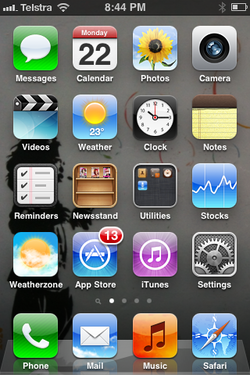 Ecommerce is growing rapidly in Australia especially since consumers are hungry for good retail offerings and more than ready for it. Australia is an absolute "apple country" with ecommerce players often finding that more than 95% of their mobile traffic comes from Apple devices, split 50-50 between iPhones and iPads, as it was the case for online shoe retailer StyleTread for example. In addition the 3G and 4G penetration in Australia, especially in the five metropolitan areas, which make up the majority of ecommerce volumes, is more than satisfactory. Australian's are also craving for the latest products, they shop heavily online and are great bargain seekers. It is therefore no surprise that a number of big online retailers and private shopping clubs have grown to very significant sizes such as surfstich, brandsexclusive, ozsale, livingsocial, catch-of-the-day or oo.com.au. Many of them offer great mobile sites or even native iPhone apps to attract the large of amounts of mobile search traffic that sometimes even peask during prime time as shoppers increasingly browse their mobile devices while watching television. Mobile shoppers are often very lucrative shoppers with high incomes, but I would like to spark a controversial discussion by posting a thesis: "Mobile shoppers will increasingly steer away from mobile-optimised sites towards the full desktop versions in order to get the full experience / look&feel of an offering" How often have you clicked on the link all the way at the bottom that takes you to the desktop / classical page? I think all product managers are well advised to optimise their core sites also for touch-sensitive devices... Windows 8 is maybe not the best example for this new trend, as it drives me absolutely mad, but it surely applies some mobile GUI design principles. :-) Let me know your thoughts... |
AuthorBjorn Behrendt is a serial entrepreneur with an extensive knowledge about online retail, payments and mobile commerce. Interview with brandsExclusive10 important Retail StatisticsGoogle Play RecordsInterview with FuturistCategories
All
Archives
April 2015
|
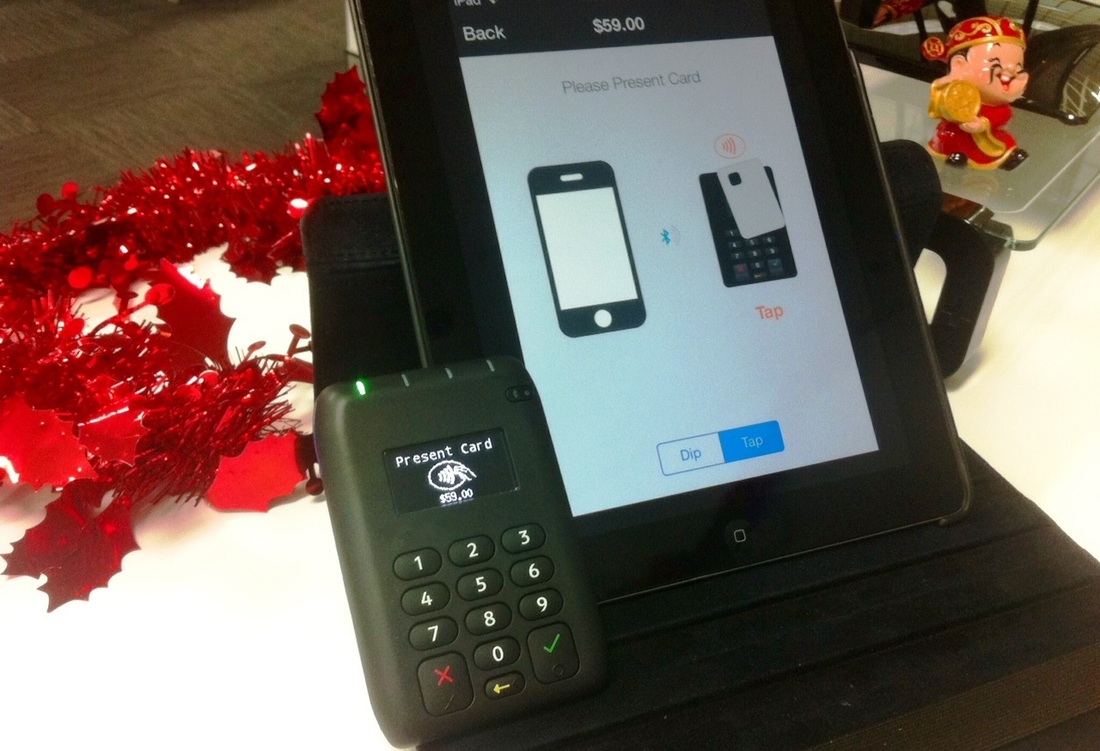
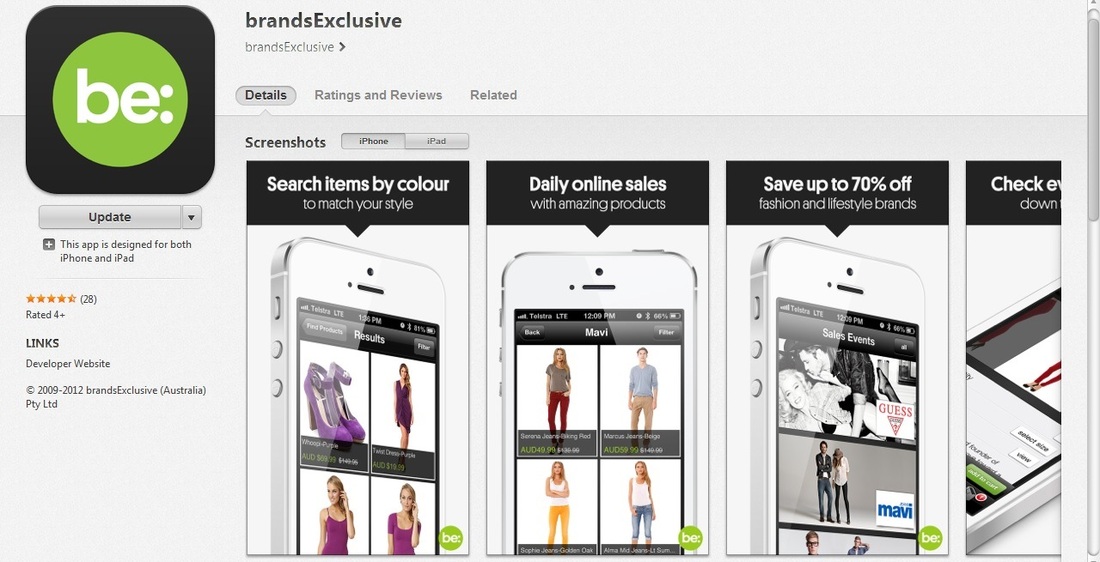

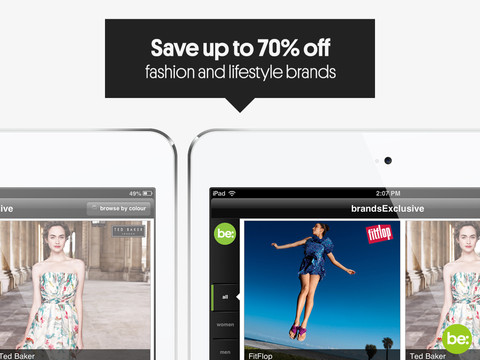
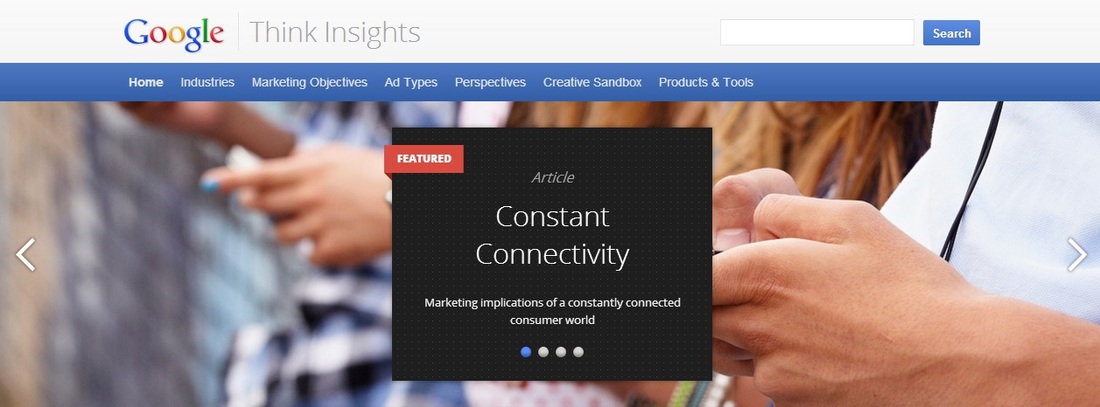


 RSS Feed
RSS Feed
